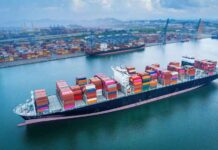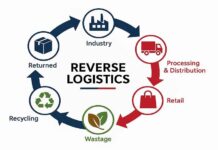The global economy has suffered from disruption before, but the past few years have posed never-before-seen challenges to supply chains in numerous sectors. At the core of all these chaos is one big problem: shortage of raw material. From semiconductor chips to crucial minerals, companies across the globe are contending with the rippling impacts of supply constraints that have forced delays in production, sent costs soaring and made long-term forecasting increasingly uncertain. A concern that used to be part of a supply chain manager’s background now looms large on a boardroom agenda, and organizations are being challenged to innovate, adapt and have a contingency plan for the worst-case scenario.
This article explores the reasons behind and the impact of raw material shortages, how companies are managing the related risks, and long-term approaches that will influence the future of supply chain management.
Raw Material Shortages Around the Globe
The shortages of raw materials did not come out of the blue — they’re the culmination of a financing-tinged series of factors that go from geopolitics to the lingering effects of the COVID-19 pandemic. Lockdowns and restrictions disrupted manufacturing and shipping at the height of the pandemic, adding to supply bottlenecks. Although demand surged again in 2021 and 2022, supply chains couldn’t catch up, resulting in huge imbalances.
Also adding to the strain is a reliance on geographically concentrated sources of raw materials. For instance, China controls the global market of rare earth elements and produces more than 60% of them. Likewise, semiconductor fabrication is monopolized in Taiwan and South Korea, with even fewer companies, like TSMC and Samsung, controlling most of that supply. When production in those places is interrupted — by natural disaster, political instability or trade war — the effects are felt around the world.
One particularly stark illustration of this was the semiconductor shortage that started in 2020 and continued all the way through 2023. It has triggered production stoppages in the automotive and electronics industries, causing companies like Ford and General Motors to lose billions because assembly lines were frozen. By 2023, the global semiconductor shortage had cost the automotive industry more than $210 billion on its own.
The Cost of Inaction
The economy is being hurt, due not just to concerns for individual companies but from shortages of raw materials. Inflationary pressures have mounted with the rising prices of raw materials such as steel, aluminum and energy supplies. The International Monetary Fund (IMF) reported in 2022 that supply chain disruptions contributed to a 30% increase in global commodity prices, and thus worsened inflation across the economies.
For enterprises, the stakes are higher than just increased expenses. The risk associated with delays in obtaining raw materials can result in lost opportunities, strained customer relationships, and damage to reputation. In fact, a report published by McKinsey & Company found that companies affected by supply chain disruptions experienced stock price drops of as much as 15%, emphasizing the financial consequence of not mitigating supply chain risk.
How Companies Are Coping Through the Crisis
With the pressures of raw material shortages mounting, companies are taking proactive steps to protect themselves. The imperative to balance shorter-term fixes with longer-term strategies has spurred a wave of innovation and collaboration across sectors.
Supplier diversification is one of the first actions companies are taking. By contrast, dependence on a single supplier or region for raw materials is viewed more and more as a risk. To counter this, firms are establishing relationships with multiple suppliers across different geographic regions. For instance, Tesla has sought to diversify its lithium supply chain by entering into agreements with mining companies in Australia, Canada and the United States, decreasing its reliance on any single market.
Forecasting and analytics is another strategy on the rise. Using a combination of artificial intelligence (AI) and machine learning, firms can now anticipate supply chain snags in advance of their occurrence. These tools help to read patterns across global trade, weather events, and geopolitical developments, allowing businesses to make data-driven decisions about inventory levels and contracts with suppliers.
Collaboration both across industries and within them has also proved to be a critical response to raw material shortages. Firms are pooling resources and sharing supply chains to secure access to vital materials. In the automotive industry, for example, new alliances are emerging among traditional rivals — such as GM and Honda — to jointly develop battery supply chains for electric vehicles, signaling a movement toward coming together to solve challenges.
Sustainability as a Solution
One more interesting facet of the raw material shortages conversation is sustainability. As availability shrinks and prices climb, companies increasingly perceive sustainability as not merely a corporate social responsibility program but a strategic necessity.
The emergence of recycling and circular economy practices as a solution The e-waste recycling drive is spearheaded by the electronics industry, which has struggled to recover rare earth elements. Apple, for instance, has built robots like Daisy that can take apart iPhones to extract precious materials such as cobalt, gold and aluminum. It also tracks these materials within the supply chain, contributing to less dependence on virgin raw materials instead.
Substitution is yet another line companies are pursuing. Companies have come to use research and development to discover substitute materials that can take the place of resources in short supply. In other industries, such as batteries, manufacturers are investigating sodium-ion batteries that could supplement or replace lithium-ion batteries as concerns grow about limiting lithium supply.
The Geopolitical Factor
Geopolitics is also playing an important role in the rise in raw material shortages. Supply chain dynamics are rarely simple because of trade policies, tariffs, and export restrictions. For example, as a result of the trade war between the United States and China, industries in both countries have faced increased costs and a lack of access to essential materials.
In the face of vulnerabilities like these, governments are responding with policies designed to bolster local output and reduce dependence on foreign imports. The European Union’s Critical Raw Materials Act, launched in 2023, plans for 10 percent of the demand for strategic materials such as lithium and cobalt to be met by domestically mined supply by 2030. In a similar vein, the U.S. government has made a massive investment in domestic semiconductor manufacturing, with the CHIPS and Science Act pouring $52 billion into strengthening the industry.
The Road Ahead
The problems of shortages of raw materials show no sign of improvement in the near term. But the crisis has spurred a reassessment of supply chains, leading companies to create systems that are more resilient and adaptable. With the focus on diversification and expansion, environmentally friendly practices, and technological advancement, the way businesses conduct themselves is changing and putting them in a better position to be ready for future challenges.
Moreover, with the advancement of blockchain technology, supply chain transparency will be significantly enhanced ensuring real-time views of the materials from sourcing, production, and delivery. Leveraged with predictive analytics and collaboration, these innovations may help reduce risks and algae enable a more resilient global supply chain.
In addition, the transition to renewable energy and green technologies will have an additional impact on the raw material landscape. As these industries shift toward sustainable methodologies, the requirements for lithium, cobalt, and rare earth elements will most likely increase. Firms that foresee and swiftly tackle such issues by the way come up with possible solutions and partnerships will emerge not only from the market solutions of the short run but end up being market leaders in a altering needs as well.
Conclusion
Perhaps the most obnoxious challenge of them all, the raw material shortages are redefining businesses all over the globe. The challenges are indeed great but have also led to some of the most innovative solutions centered around strength, sustainability, and working together to address them. With the integration of their advanced technologies, diversification of supply chains and their investment into sustainable practices, businesses are setting themselves up for a more secure adaptability moving forward.
With uncertainty continuing to buffet the global economy, one thing is certain: The businesses that emerge from these long-term raw material shortages on top will be those that treat the crisis not as a seemingly futile challenge but as an opportunity to create alternate strategies for radical transformation and healthy growth.

























